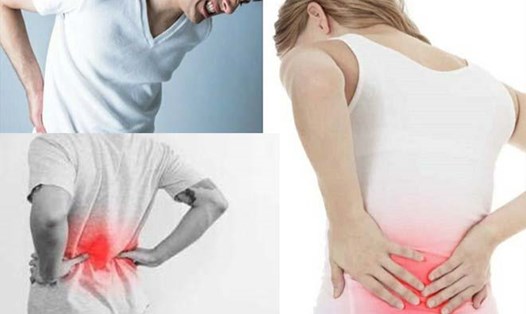As you age, you tend to develop certain conditions that are associated with back pain, says Dr. Manan Vora, sports medicine physician and orthopedic surgeon (founder of NutriByte Wellness Center, India).
Compared with working-age adults, older adults (60 years and older) are more likely to have low back pain due to vertebral fractures due to osteoporosis, tumors, spinal infections, and lumbar spinal stenosis.
Dr. Manan Vora offers five measures to prevent lower back pain in older adults:
Exercise and physical therapy
The American Heart Association recommends at least 30 minutes a day of moderate-intensity aerobic exercise (five days a week).
Combining exercise with calcium and vitamin D supplementation will be an important component in combating the development of bone loss or osteoporosis.
A rehabilitation program that combines muscle strength, flexibility, and aerobic exercise is beneficial for people with chronic nonspecific low back pain.
Strengthening the muscles can support the lumbar spine. Improving the flexibility of the muscles and tendons and ligaments in the back increases range of motion and supports functional movement.
“Aerobic exercise increases blood flow and nutrients to the soft tissues in the back, improving healing and reducing stiffness that can lead to back pain,” says Dr. Vora.
Maintain ideal weight
Obesity is associated with an increased risk of back pain. Excess weight also tends to prolong recovery time from back pain.
Each additional pound of weight puts strain on the muscles and ligaments in your back. To compensate for the extra weight, the spine tends to tilt and strain unevenly. Excess stomach weight often pulls the pelvis forward (increasing the natural curvature of the lumbar spine), leading to more severe lower back pain.
Heat therapy
Back pain is often related to muscle spasms or stiffness due to osteoarthritis. Dr. Vora says that applying heat to the lower back will help to relax the muscles and increase the range of motion, which can quickly resolve both spasms and stiffness.
Quit smoking
Many studies have shown a link between smoking and back pain. Smoking damages your arteries, and damaged arteries in the discs and joints in your back can lead to pain and injury.
Smoking also increases your risk of osteoporosis, a bone-thinning disease that can lead to back pain.
Correct posture
When you practice proper posture, you keep your bones and joints aligned. This reduces abnormal wear and tear on joint surfaces, reduces stress on the ligaments that hold your spinal joints together, and allows your muscles to function more efficiently.









